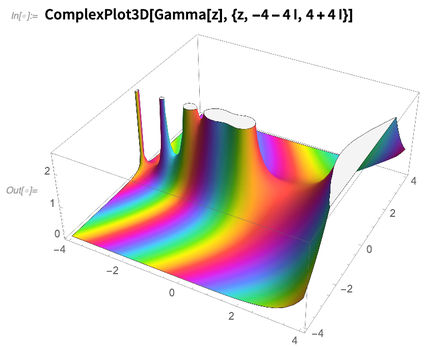| Major New Release of Wolfram Language and Mathematica |
| Written by Alex Denham | |||
| Monday, 29 April 2019 | |||
|
There are new versions of Wolfram language and Mathematica. Release 12 offers improvements in support for chemistry, geometry, numerical uncertainty and database integration. We highlight just a few of the many improvements and additions. Mathematica is an application for doing math with a complete programming language embedded within it. The Wolfram language is also available for writing code as a separate entity. It couples the Mathematica engine to automate symbolic processing in ways that are quite powerful, though most of the power comes from the Mathematica engine.
On his blog Stephen Wolfam writes: It’s a big jump from Version 11.3 to Version 12.0. Altogether there are 278 completely new functions, in perhaps 103 areas, together with thousands of different updates across the system. ... In an “integer release” like 12, our goal is to provide fully-filled-out new areas of functionality. But in every release we also want to deliver the latest results of our R&D efforts. In 12.0, perhaps half of our new functions can be thought of as finishing areas that were started in previous “.1” releases—while half begin new areas. One of the improvements to the new Mathematica is better support for creating complex plots. It’s always been possible to write Wolfram Language code to make plots in the complex plane, but this release automates the process to remove the need for writing code for plotting functions in the complex plane.
Polygon handling has been expanded in the new release with the addition of the ability to specify holes in polygons to handle cases such as countries that completely surround other countries, such as South Africa and Lesotho. The ability to compute with polyhedra has also been added. Polyhedra are more complicated to work with than polygons: in addition to giving the vertices, you have to say how these vertices form faces. The new release lets you do this, including specifying voids (the 3D analog of holes). Support has also been added in both Mathematica and the Wolfram Language for Euclidian geometry. In Mathematica, this is based on the introduction of symbolic “geometric scenes” that have symbols representing constructs such as points, and then the ability to define geometric objects and relations in terms of them. Axiomatic theory support has also been added. The previous version of Mathematica introduced a method for generating symbolic representations of proofs, and this release added axioms for various common axiomatic theories. Support for n-body simulation is another new addition. The neural network support has been extended, with new curated models in Mathematica's Neural Net Repository. There are now nearly 100 curated models of many different types in the repository, with new ones including the BERT 'transformer' neural network. More generally in the area of neural networks, Version 12 has several new layer types including attention layer that is used in the latest “transformer” architectures. Neural net functional programming has also been improved, and new net encoder and decoder cases have been added. NetTrain now supports multi-GPU training, and there are new options for seeing what’s happening during training.
More InformationStephen Wolfram blog: Version 12 Launches Today! Wolfram Language: New Features in Version 12 Mathematica: New Features in Version 12 Related ArticlesWolfram Language Cloud Launched Wolfram Language The Key To The Future? What To Call A Language - Mathematica Has a Problem Buy A Pi For $25 And Get Mathematica Free Free Sage Math Cloud - Python And Symbolic Math Wolfram Finance Platform Launched To be informed about new articles on I Programmer, sign up for our weekly newsletter, subscribe to the RSS feed and follow us on Twitter, Facebook or Linkedin.
Comments
or email your comment to: comments@i-programmer.info |



